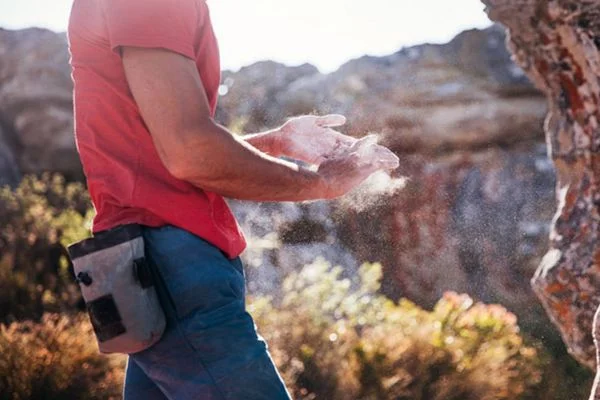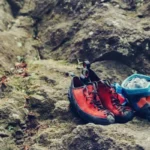Whether you’re an experienced climber or just trying out the sport for the first time, you know that having good quality climbing chalk is essential to your success. But have you ever stopped to consider how is climbing chalk made? In this blog post, let’s take a look at what goes into the production of this essential rock-climbing tool.
Is Climbing Chalk Mined?
You might have heard of rock climbers dusting or coating their hands with white powder before scaling a cliff face or wall. That white powder is climbing chalk, and it is actually mined from the ground! It is mainly composed of magnesium carbonate and has been mined for centuries.
Climbing chalk helps to reduce greasiness and sweat on the hands, ensuring that they are dry while they grip the surface they are climbing.
So mining it makes sense – but there remains the question: where is climbing chalk mined? It is mainly mined in Pakistan, China, France, Mexico, and America. The powder can be purchased off-the-shelf in specialist stores and regular sports shops.
Also Read: Is Climbing Chalk Bad For The Environment?
How Is Climbing Chalk Made | Basic Recipe

The basic recipe for most climbing chalk is simple—it’s mostly just magnesium carbonate powder with a few other ingredients added in to help it stick together.
Making climbing chalk starts with grinding up chunks of magnesium carbonate and other minerals until they reach a fine powder consistency. This powder is then filtered through sieves to remove any large particles and ensure that only the finest powder remains.
Once filtered, the powder is mixed with a binder such as glycerin or an acrylic polymer. This helps the chalk form clumps more efficiently instead of crumbling apart when applying pressure.
The mixture is then pressed into molds and allowed to cool until it hardens into its final shape and size. Afterward, some chalks are colored by adding food-grade dyes or pigments for aesthetic purposes and sealed in resealable bags for easy storage.
Some brands may use additional ingredients in their formulas, such as kaolin clay, which helps absorb moisture from your hands and keeps them dry during your climb; baking soda, which can reduce skin irritation; or even essential oils such as tea tree oil or lavender oil, which add an extra layer of protection against bacterial growth on your hands while also giving off a pleasant scent.
Also Read: How Does Climbing Chalk Work?
Why Is Climbing Chalk Magnesium Carbonate?
Climbing chalk is made from magnesium carbonate because it helps reduce the amount of sweat and friction caused by hands on the rock faces.
It’s the perfect material to help climbers retain a better grip without needing a lot of force in their hands or feet, which means they can climb longer and more efficiently. Climbing chalk also helps keep dirt off rocks, another essential part of any climbing trip.
The magnesium carbonate absorbs moisture and leaves behind an almost powdery layer, so dirt doesn’t stick easily. This extra protection makes climbing safer and more enjoyable for all involved – making magnesium carbonate an essential ingredient in the climbing world!
Also Read: How Much Does Rock Climbing Chalk Cost?
Conclusion
So there you have it—that’s how climbing chalk is made! The process may seem complex, but at its core, all it takes to make quality climbing chalk is just some magnesium carbonate powder and a few other ingredients mixed in the proper proportions.
And if you’re looking for an extra boost of confidence while scaling up rock faces, a good grip on the wall can be all that stands between success and failure!
So next time you go shopping for your favorite brand of climbing chalk, remember that you are not only getting a necessary tool but also helping support businesses who put effort into making sure their products are safe and reliable for climbers worldwide!



